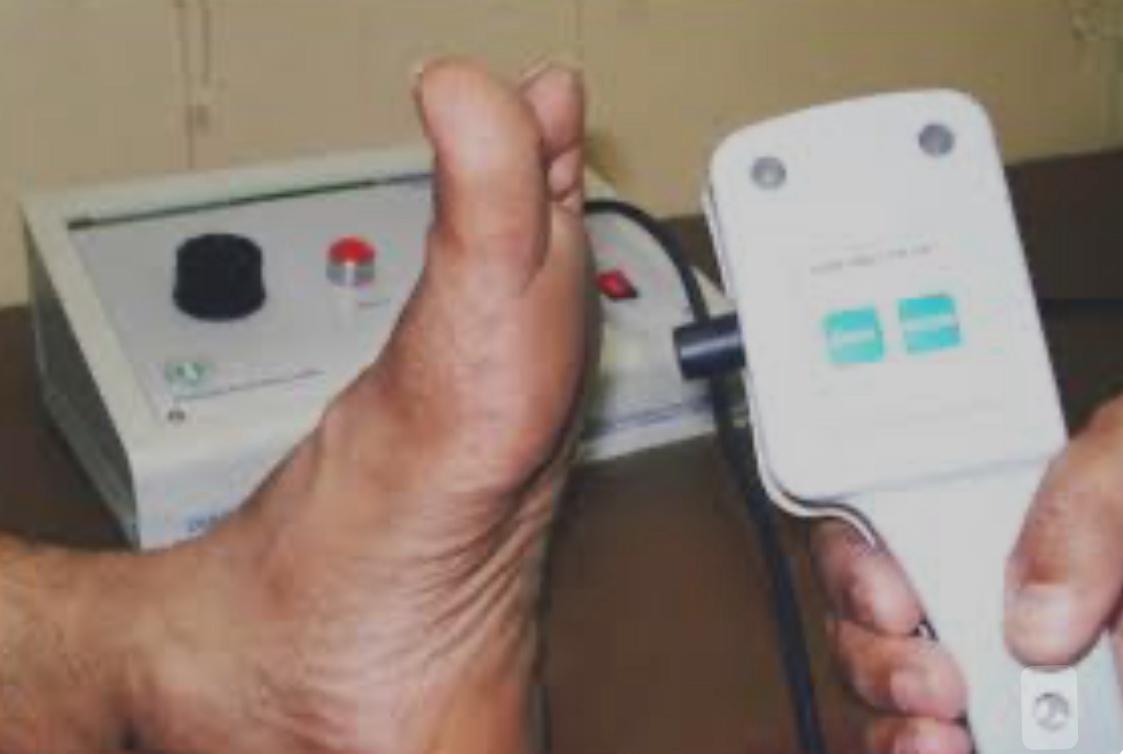Biothesiometry
Biothesiometry is a test frequently used to evaluate the sensitivity of your nerves, particularly the sensation in your hands and feet. This test becomes especially crucial in conditions like diabetes where prolonged high blood sugar levels can damage nerves leading to 'diabetic neuropathy', often first appearing as numbness, tingling, or pain in the feet.
01. Non-Invasive:
It's a non-invasive, painless test that uses a small, handheld device called a biothesiometer.
02. Vibration Perception:
The device applies a small, harmless amount of vibration to the skin. You'll be asked to inform the clinician when you start to feel the vibration. This helps to measure your vibration perception threshold (VPT).
03. Early Detection:
It can detect early nerve damage in diabetes, even before you notice any symptoms. This allows for early intervention which can slow down the progression and limit the degree of nerve damage.
04. Repeated Tests:
Over time, repeated biothesiometry tests can help to monitor the progression of nerve function loss or the effectiveness of treatment measures.
Remember, if your doctor recommends a biothesiometry test, it's important to follow through as it provides them vital information about your nerve health. The findings can be used to guide your diabetes management plan and to prevent complications like foot ulcers. Always follow your healthcare provider's guidance in managing your health condition.

